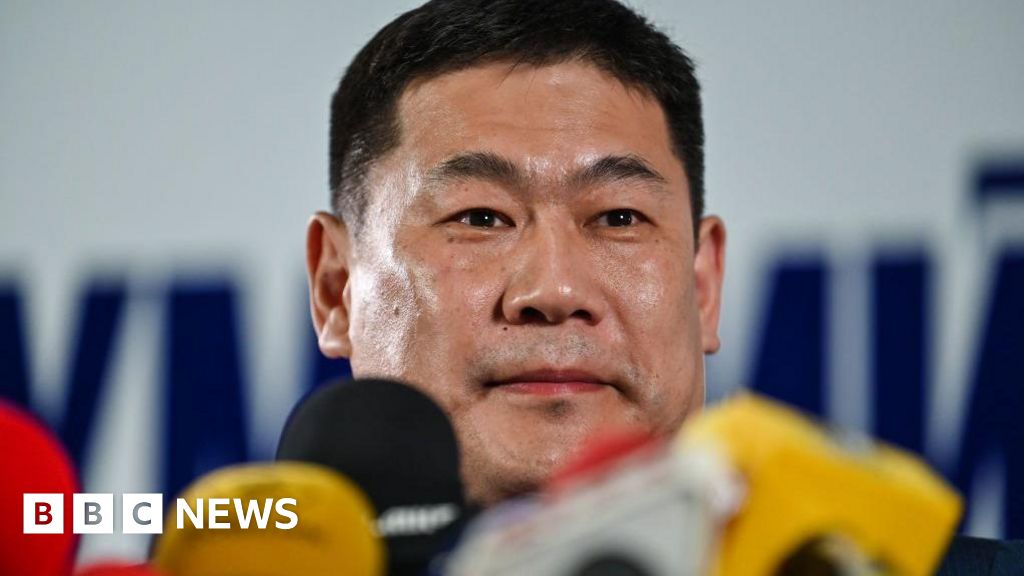ARTICLE AD BOX
President Trump has tamed Congress and largely defanged the federal bureaucracy as he pursues his vigorous second-term agenda, but federal district judges have rushed to the battlements to take him on.
As Mr. Trump crosses the six-month mark in office, he’s already faced at least 500 lawsuits challenging his executive actions, or a rate of four new lawsuits for every business day since Jan. 20.
District judges have made substantive rulings in more than half of those cases. And the results have been grim for Mr. Trump, who saw judges rule against his position 75% of the time, according to The Washington Times’ Trump litigation tracker.
About 50 of those cases were part of the administration’s ill-fated effort to boot some foreign students over irregularities in their immigration and criminal records, and Mr. Trump lost roughly 90% of those cases.
But even discounting those, district judges still ruled against the government — either by issuing injunctions or otherwise delaying Mr. Trump’s agenda — a stunning 70% of the time.
The opposition has been led by judges appointed by Presidents Obama and Biden, who have ruled against Trump positions more than 125 times. That works out to more than 80% of the cases on which they’ve ruled so far.
But the resistance crosses party lines, with judges appointed by President Reagan ruling against Mr. Trump in all 15 cases to reach substantive outcomes, and George W. Bush appointees ruling against Mr. Trump nearly 85% of the time.
Only judges appointed by Mr. Trump have a generally positive reception for the president, ruling in favor of him 70% of the time so far.
“Overall, with the important exception of Trump lower court judges, lower court judges have tended to be a check against some of the overreaching by the Trump administration,” said Elliot Mincberg at People for the American Way. “That has been across all the different lines. The exceptions have been Trump judges.”
Courts have seen an incredible range of cases, from unprecedented immigration battles to transgender prisoners’ rights to groundbreaking questions about the limits of presidential power in firing federal workers or restructuring government agencies.
That is, of course, a reflection on the unfathomable range and pace of Mr. Trump’s actions over the last six months.
His aggressive agenda is backed up by novel legal arguments that confound judges.
“He’s just very, very unconventional, and establishmentarians — and judges are overwhelmingly represented by establishmentarians in both parties — they are offended,” said Ken Cuccinelli, a Republican former Virginia attorney general.
“For them, it isn’t that they’re pro-illegal immigration, it’s that they don’t like the unconventional approach that Donald Trump takes,” he said.
Another part of the explanation for Mr. Trump’s losing record in the courts is where the cases are being brought.
The federal district court in Washington, with nearly 40% of the cases in The Times’ database, is at the top of the list. Second is Massachusetts with about 10% of all cases, and third is Maryland with about 7% of all cases.
That means those three courts account for more than half of all the cases, even though there are more than 90 judicial districts nationwide.
Washington’s position is obvious, given that it’s in the seat of the federal government. But Massachusetts and Maryland are odder — until you look at the makeup of the judges. Of the 10 active regular judges in Maryland, only one was appointed by a Republican. And of the 12 regular judges in Massachusetts, 11 were appointed by Democrats.
It’s such fertile ground that other states rush to the federal court in Massachusetts to bring their lawsuits.
New York is leading three cases in the court there — more than Massachusetts itself, which only has two. California and New Jersey also are leading two cases apiece in Massachusetts.
Overall, Democrat-led states have brought at least 40 of the cases, according to the Democratic Attorneys General Association.
In a fundraising email, DAGA asked donors to pony up to continue the onslaught, saying the state attorneys general have been “the most powerful group holding the administration accountable.”
Also high on that list are the American Civil Liberties Union, immigration-rights groups and labor unions. Indeed, the top single lead plaintiff in The Times’ litigation database is the American Federation of Government Employees.
The Times’ database is culled from court records. It is not exhaustive but likely representative of the Trump litigation, slightly weighted toward the districts where high-profile cases were more likely to be brought.
The data for this story was current through July 16.
It found that district judges appointed by Mr. Biden are currently ruling against the Trump position 80% of the time; Obama judges 82%; George W. Bush judges 84%; and Clinton judges 79%. One Carter judge has ruled in one case, going against Mr. Trump.
Then there are the 15 cases involving a Reagan judge, all of which went against Mr. Trump. Most of those were handled by Judge Royce Lamberth, who ended up with a series of cases challenging the government’s wind-down of the U.S. Agency for Global Media and new Trump policies on treatment of transgender prisoners.
William G. Young, a Reagan appointee in Massachusetts, has also ruled against the Trump position in a number of cases involving changes at the National Institutes of Health.
Judges appointed by Mr. Trump are the exception to the trends. They are backing the president’s position at this point in 70% of the 40 cases.
Legal experts generally said the difference in rulings from judges appointed by Mr. Trump versus Mr. Obama or Mr. Biden isn’t so much a reflection of political favor as it is a deep dissonance in judicial philosophies and Mr. Trump’s expansive claims of presidential power.
“He’s deliberately pushing the legal envelope,” said Zachary Price, a professor at the University of California College of the Law, San Francisco.
Mr. Cuccinelli, who is now a senior fellow at the Center for Renewing America, said there’s a “personal element” in some judges’ treatment of the administration — a Trump factor, so to speak — that shouldn’t be ignored.
“He inspires a unique part of judges to cast aside their judicial obligations,” he said. “They excuse it in a variety of ways in their own minds, but excuse it they do. The very same executive orders, coming from George Bush senior, would never get the extreme response of the courts that is occurring with President Trump.”
That shows up even in rulings where judges side with the administration on the legal arguments, but still feel compelled to signal their angst over the fact that they couldn’t rebuff the president.
Take Judge Amit Mehta, an Obama appointee, who unloaded on the Justice Department even as he agreed that he was powerless to stop Attorney General Pam Bondi’s termination of grants.
“Defendants’ rescinding of these awards is shameful. It is likely to harm communities and individuals vulnerable to crime and violence. No federal agency, especially the Department of Justice, should conduct itself in such manner,” he scolded in a written opinion.
“But displeasure and sympathy are not enough in a court of law. The court’s powers are limited. It cannot act without jurisdiction or in the absence of a valid cause of action. That is the nub here,” Judge Mehta wrote.
Though Mr. Trump has struggled among district judges, he has done better as the cases rise to higher courts.
Mr. Mincberg said the Circuit Court of Appeals for the District of Columbia and the Supreme Court have been particularly permissive when it comes to Mr. Trump’s remake of the federal bureaucracy.
“Overall, in terms of executive authority, he’s done very well,” Mr. Mincberg said. “Towards the beginning where, frankly, there were surprises in terms of how aggressively he moved, the courts were hesitant and at least slowed things down a bit. But unfortunately, from my perspective, he’s caught up, or they’ve caught up, and he’s getting what he wanted, led by the Supreme Court.”
Mr. Trump’s least successful line of cases so far has been his attempts to punish law firms he believes are too friendly with Democrats, and dozens of cases where foreign students successfully challenged their removal from the Student and Exchange Visitor Information System.
Mr. Price said the judges are doing “reasonably well under challenging circumstances.”
“That’s not to say every decision is correct, or I agree with everything, [but] as the litigation process plays out, they’ve been doing a decent job of trying to sort the good from the bad and uphold the rule of law,” he said.
But Mr. Cuccinelli saw it differently.
“I don’t think the administration has been fairly treated at the district court level,” he said.

 5 hours ago
11
5 hours ago
11








 English (US) ·
English (US) ·